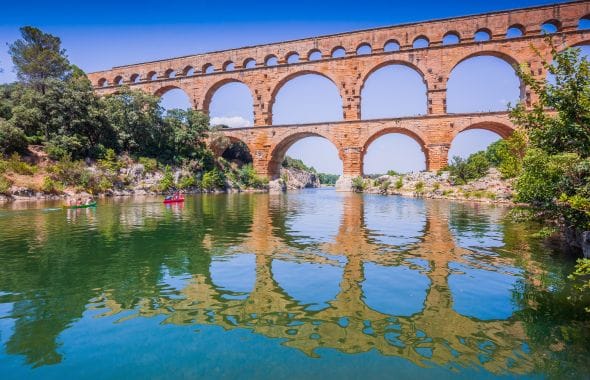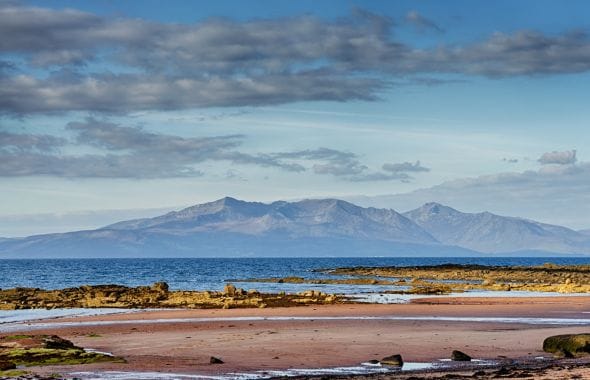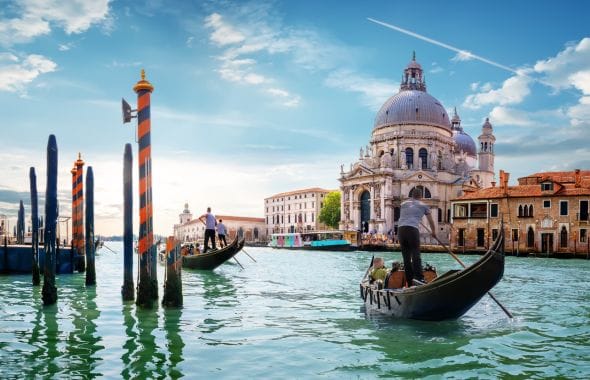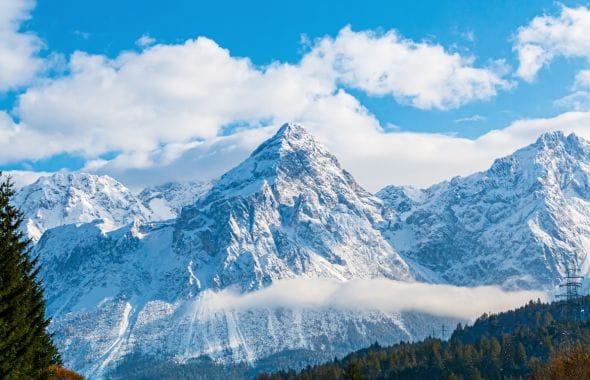
“Train delayed by 120 minutes” are not the words you want to hear when you’re heading off on a trip.
This was especially true as we were only going to be in our destination for six and a half hours to start with. Losing two hours was not the best start.
By the time the train rolled into the platform it was running 2.5 hours late, which I hoped it would be able to catch up overnight. This was my first trip aboard the European Sleeper, the night train that connects Brussels with Prague via Amsterdam and Berlin. It runs three times per week, departing Brussels just after 7pm and arriving into the Czech capital 16 hours later. The train is then cleaned and prepared for its next passengers, before turning around and returning to Belgium. It means that, if you want, you can spend two consecutive nights on board with a six-and-a-half hour break in Prague in the middle.
It sounds extreme, but this is what we’d settled on. Why not? A quick in-and-out to the historic city: enough time to eat some lunch, drink some beer and see the sights. No need to bring lots of luggage; no need to worry about accommodation. It would be a counter-narrative to the ‘extreme’ day trips that have become a trend recently, where people take an early flight to their destination then return on the sunset. This would be the train version, showing that you can still do outlandish travel adventures without flying. Yes, the train takes longer, but it doesn’t count if you’re asleep, and waking up somewhere south of Berlin, then winding along the Elbe valley with endless mesmerising views, is as much a part of the holiday as the city of Prague itself.
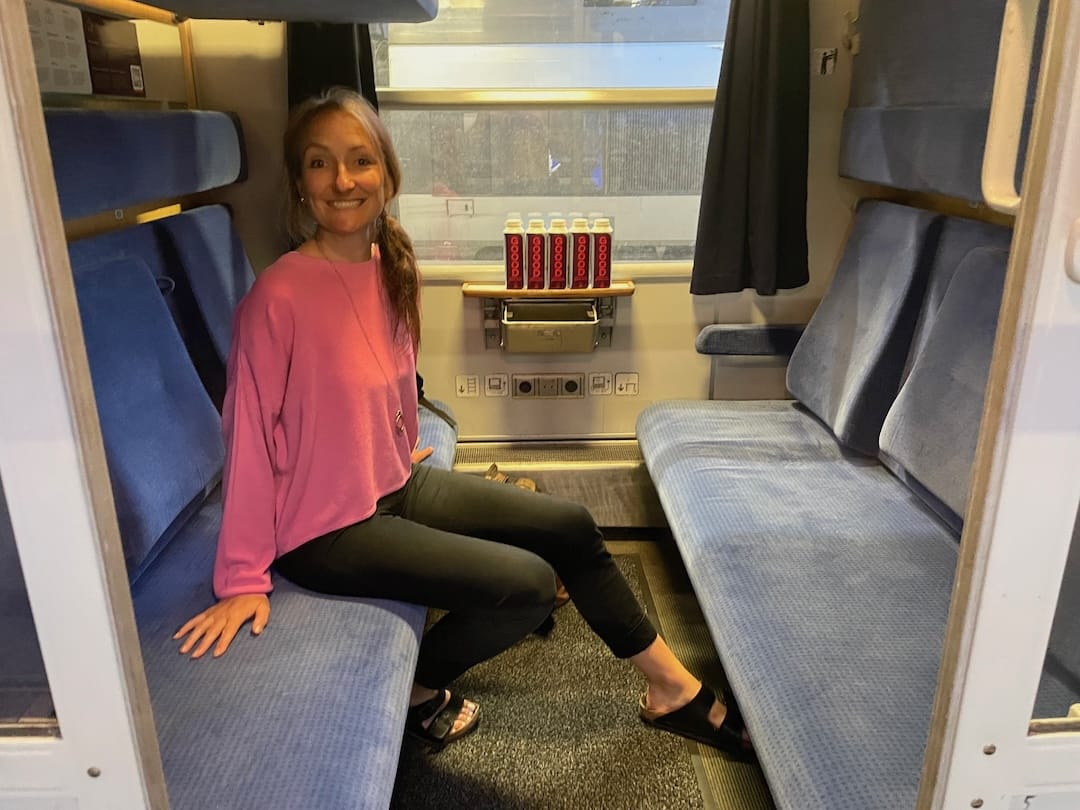
My travel companion, Sarah, is a night train aficionado, so when we entered our five-person couchette she deftly un-pinned the bunks and saw everything into its place. Couchettes are a miraculous use of space: six comfortable seating spaces become the bottom bunks, with the remaining beds folding down from the walls. A small pop-up railing gives reassurance that you won’t roll out of the upper bunks, and a ladder gives easy access. There’s a light next to each bed, and an elastic pouch to keep a few items, and storage underneath the bottom bunks or over the door area. In the daytime, once the bunks are folded away, you can put up the table for drinks, food or card games.
We had anticipated watching out of the window as the train rolled into the Dutch nighttime for a couple of hours, but the delay meant it was already past 10pm when we boarded, so we prepared for sleep straight away: teeth, pyjamas and earplugs. The sanitary facilities are not exactly swanky, but if that’s what you’re after, you’re in the wrong place. This is rolling stock from the 90s, so it’s vintage rather than luxurious, but it had everything we needed: a clean and working toilet, plugs to charge our phones, and a small sink area to wash and refresh. It reminded me a bit of hosteling or camping: if you can cope with a tiny bit of discomfort and are happy to take things as they come, you’ll be fine. The rocking of the train is extremely conducive to sleep, but there will be unexpected noises throughout the night so earplugs are essential, and light filters through even the black-out curtains so both Sarah and I slept with a jumper over our heads (having both forgotten our eye masks).
We awoke early as we rolled into Berlin. Fortunately the train had made up a good amount of time in the night, and by this time we were only an hour behind schedule. We joined the numerous other passengers still in their nightwear standing in the corridor, taking in the views. Berlin looked fascinating and vibrant in the morning sunshine, and we soon crossed the river where the famous green-domed cathedral stands overlooking the water.

This would have made the perfect location for a day trip, with a 6am arrival and 11pm departure, which would give plenty of time to see everything you might wish to see without it all feeling like a rush. But no, the train goes all the way to Prague, and so would we.
Later came Dresden and more views over iconic architecture. But some of the most striking sights were the ordinary ones: acres and acres of allotment plots, which are evidently an important part of German social culture and community; churches with tall spires and red brick roofs; everyday people waiting on station platforms as we strobed through.
South of Dresden the railway follows the luscious Elbe valley, where colourful villages cling to the steep-sided hills, thick forests reach to the exposed rocky crags above, and where a hilltop fort might perch. The wide and flat river-side cycle path flowed with cyclists and rollerbladers.
Spending so many hours on a train might seem like dead time, but it’s really not. If you do succeed in wrenching your eyes away from the views, you can always use the time to work. There are worse places to catch up on your emails.
A buzz of excitement on board announced the distant glimpse of Prague castle, before the final exaggerated swirl of the river rounded us slowly into the city centre. Amazingly, we had made up nearly all of the lost time, and disembarked just 35 minutes behind schedule. We were ready to explore.
Even though we were travelling light, we checked in our small backpacks at the left luggage so we could walk around the city with just our handbags. Lockers and left luggage are extremely handy, and highly recommended not only to ease sore backs but to stop you looking too much like a tourist.
It was the perfect weather to explore: warm and sunny, but not too hot to be outside all day. We had considered using the bike hire system to speed things along, but in the end went by foot, which was perfectly fine in the time we had. The priority was to find lunch, which we did in the heart of the Old Town, in a charming cafe surrounded by narrow cobbled streets and colourful architecture.
Then it was off to see the sights, starting with Charles Bridge, where we could barely move for tourists. Groups collected next to the iconic medieval statues for the perfect photo op, and down on the river, stag parties went past on boats. The stone arch at the far end of the bridge led to more cobbled streets and an open square, where traditional Praguian trams rattled in front of the storied and decorative buildings. Open-fronted bakeries repeatedly offered the local speciality: Czech Chimney cake, a twisted pastry cone dipped in sugar and nuts and filled with ice cream.
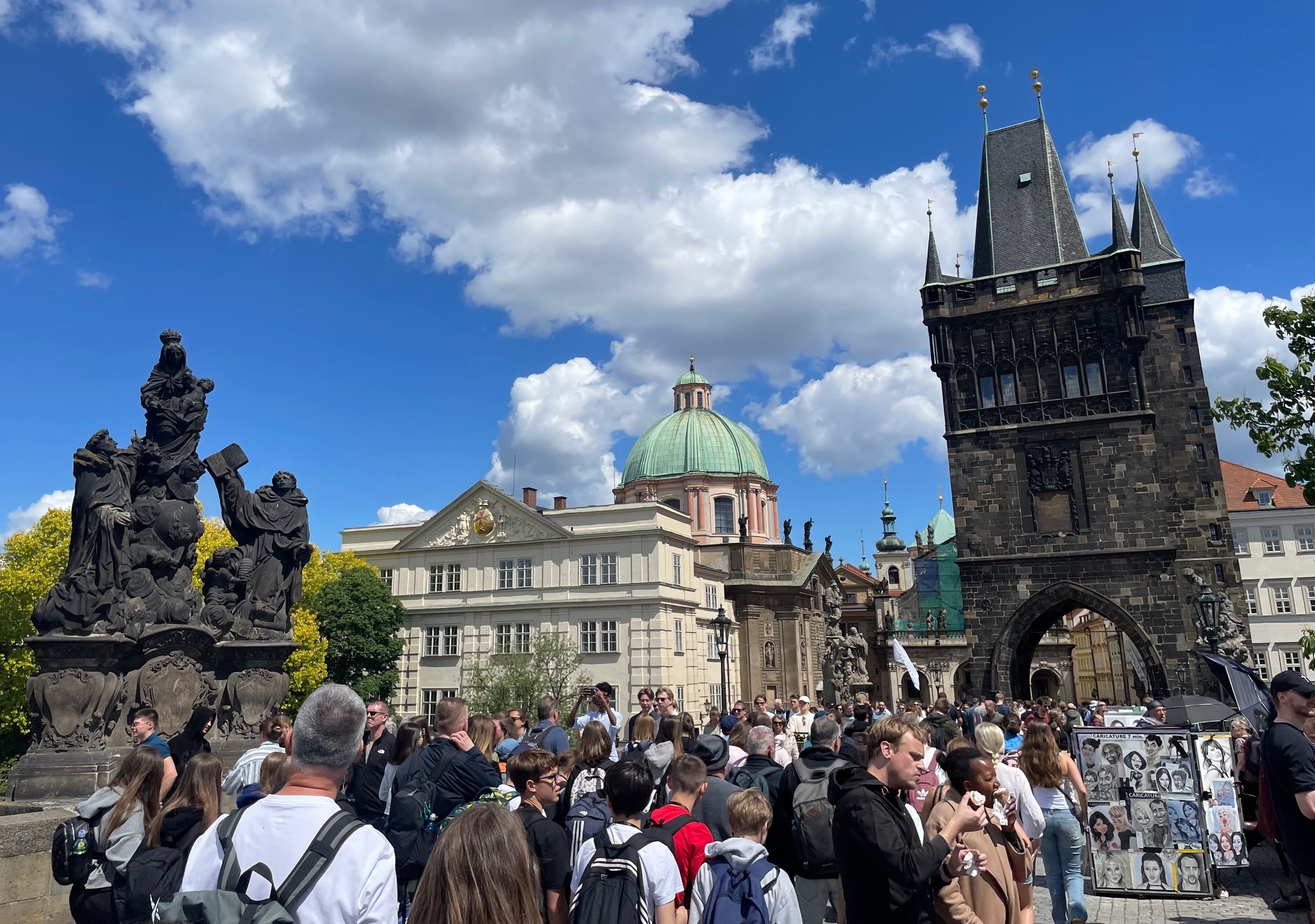
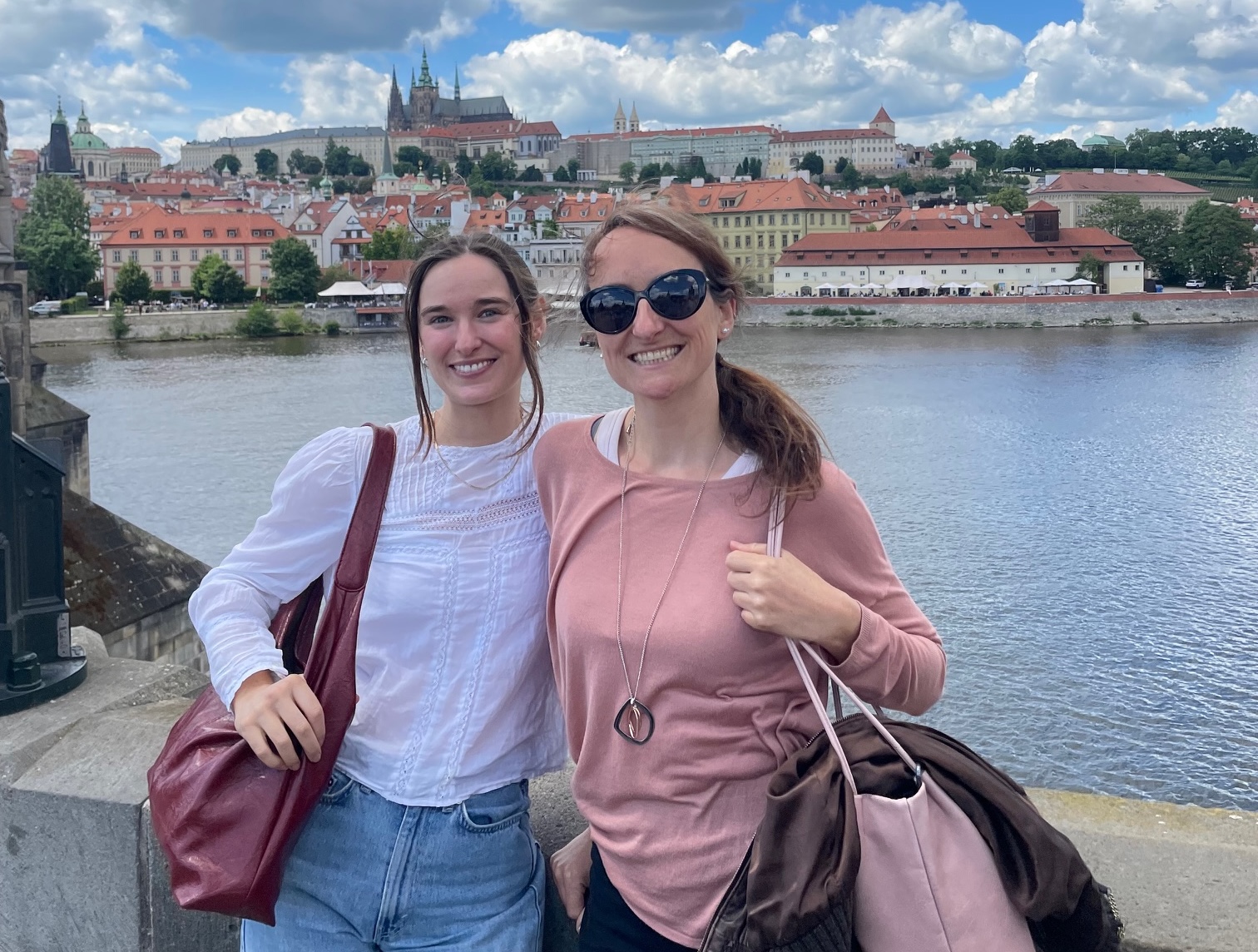
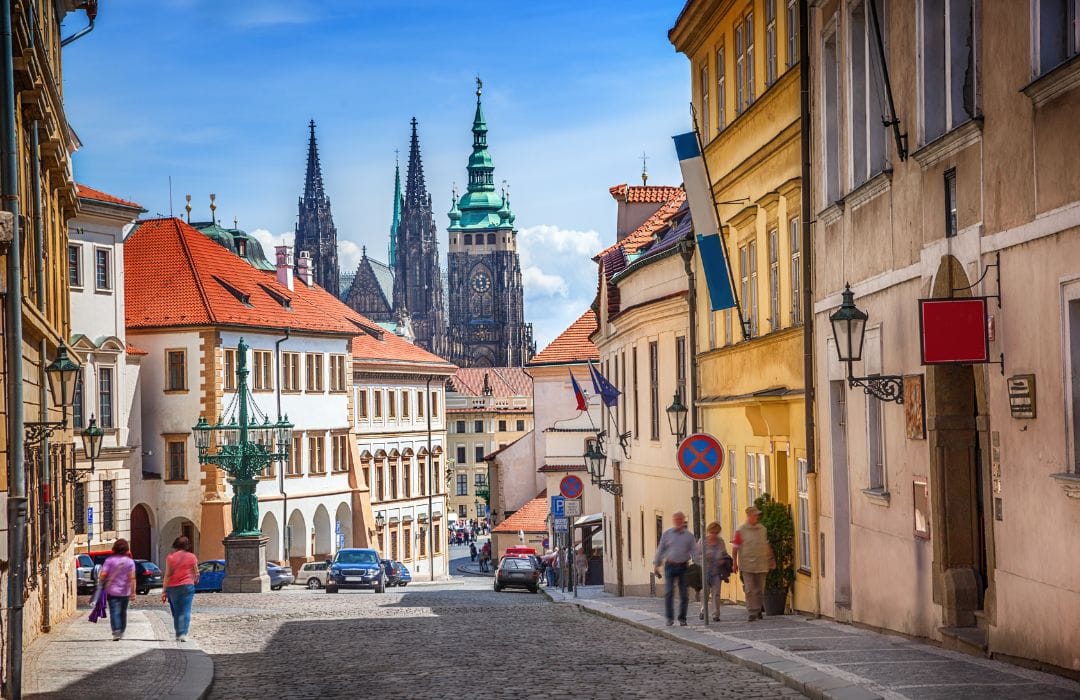
Then it was up the steps to the castle for a view across the city, and down the other side to find the waterfront where we could sit in the peace and quiet for a few minutes, watching children feed the pigeons.
Our route back to the station took us past the famous astronomical clock that we’d missed on the way out, marching straight past it on our mission to find lunch. There would have been time for a museum or two if there’d been tickets, but we were too late – they were sold out. So instead we made our slow way back to the station, where the European Sleeper was waiting in the platform for us, ready to board, all sorted and on time.
It felt strange to go so far for such a short time but it hadn’t felt rushed, and if it’s possible to travel in this way, why not do so once in a while? It felt exciting to do something that others might see as outlandish, but hopefully it shows what’s possible, and might encourage others to also visit Prague (perhaps for longer!) by train instead of flying, which is how the vast majority of all those tourists would have got there.
What did we learn from our few hours in Prague? That you can travel really far even without flying. That it’s possible to get a feel for a city in just a few hours. That the journey really is as much a part of the holiday as the destination.
When we woke the next morning, back in Brussels and a short hop from the UK, we felt the same as many others do when they’ve completed a flight-free trip: a sense of achievement and adventure, and satisfaction for not having had to get on a plane to do it.
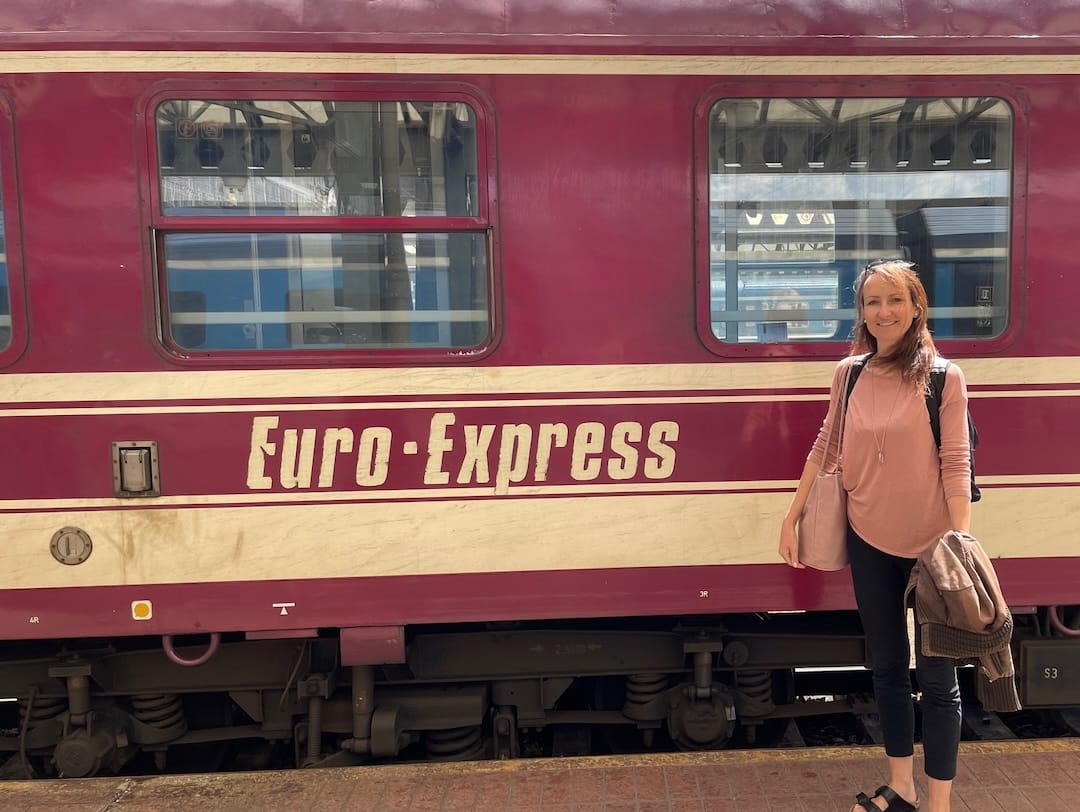
European Sleeper practicalities and tips
- you can have a five- or six-person couchette, and you can specify female-only if you wish
- a cabin has up to three beds and a separate chair and private wash station (the beds also fold down from the walls, but don’t double as seats as they do in the couchette)
- the cheapest option is seating rather than a couchette/cabin – but this depends on your tolerance for discomfort!
- earplugs and eye-mask are highly recommended
- hot drinks are available to buy in the morning. You can also buy a breakfast box which has yogurt, granola, orange juice and a bread roll
- arriving 20-30 minutes before your departure time is plenty
This trip was provided by European Sleeper. Prices start at €59.99 for a seat and €99.99 for a couchette.
